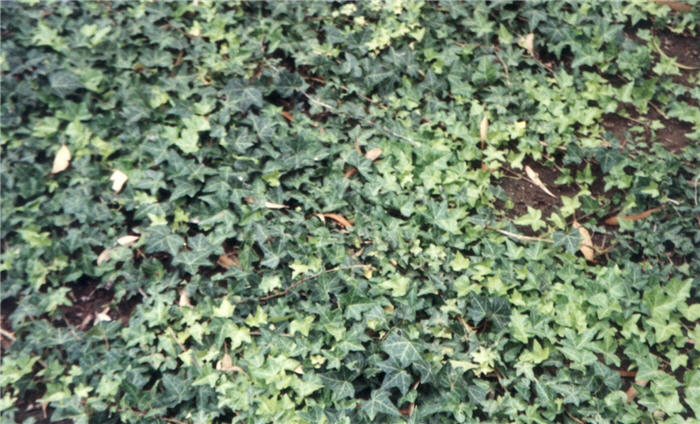| Botanical Name: Hedera helix cultivars | |
| Common Name: English Ivy |

-
Anatomy
-
Culture
-
Design
Plant Type
Broadleaf Evergreen, Ground cover, Vine
Height Range
Under 1', 25-40'
Flower Color
White
Flower Season
Summer
Leaf Color
Green, Light Green, White, Yellow, Variegated
Bark Color
n/a
Fruit Color
Blue
Fruit Season
Summer, Fall
Sun
Full, Half, Shade
Water
Medium
Growth Rate
Fast, Moderate
Soil Type
Sandy, Clay, Loam, Rocky, Unparticular
Soil Condition
Average, Rich, Poor, Well-drained, Moist, Dry
Soil pH
Neutral, Basic
Adverse Factors
Allergenic, Invasive
Design Styles
English Cottage, Formal, Japanese, Mediterranean, Ranch, Spanish, Tropical, Woodland
Accenting Features
Espalier, Unusual Foliage
Seasonal Interest
Winter, Spring, Summer, Fall
Location Uses
Background, Parking Strip, Raised Planter, Walls / Fences
Special Uses
Cascade, Container, Erosion Control, Mass Planting, Lawn Alternative, Naturalizing, Hanging Baskets
Attracts Wildlife
Birds
Photographer: Modesto Jr. College
-
Description
-
Notes